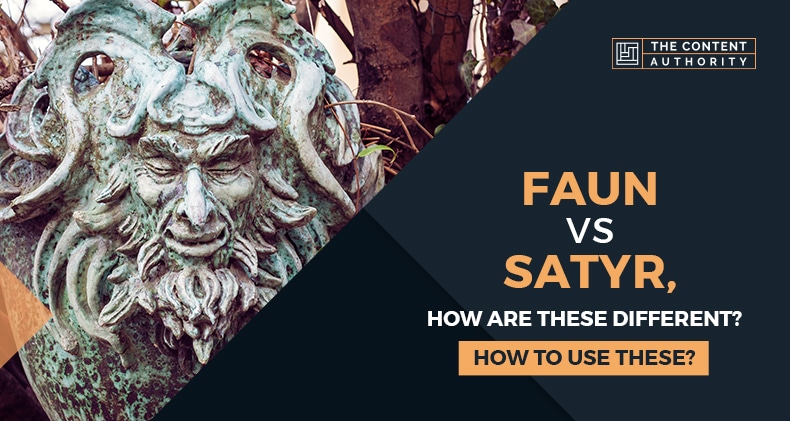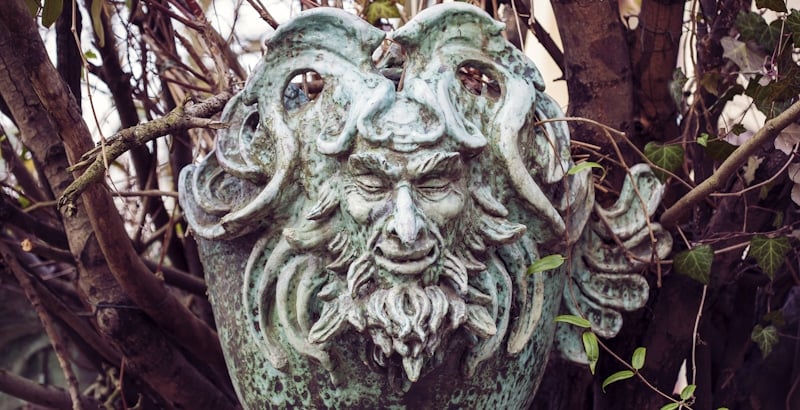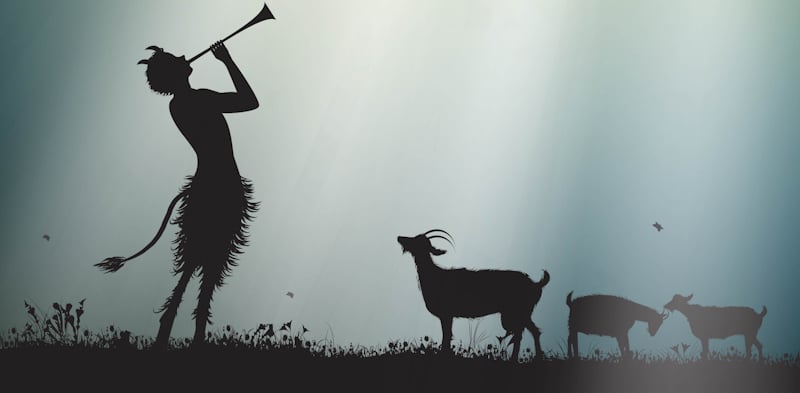If you are into mythology, you might have come across fauns and satyrs. At first glance, these mythological creatures might appear similar, but they are different in many ways. That being said, what are the differences?
The first two differences we can point out are appearances and origins. Fauns originate from Roman mythology and seem to be handsome. They have human torsos, goat-like lower bodies, and horns. On the other hand, satyrs are from Greek mythology and resemble humans, but with a horse or donkey tail.
These creatures are more complex than what we have discussed. Therefore, we will dig a bit more into mythologies, creatures, and their appearances in this article.
Differences
We already mentioned the differences between a faun and a satyr, but let’s dig deeper into the appearance and origins of both mythological creatures.
Origins
The origins of both creatures are close but not the same. Here we discuss the origins, differences, and similarities included.
Faun
Fauns are from Roman mythology, and they were one of the most popular and antique divinities. They were creatures that inspired fear in men traveling through lonely, remote, and wild places, as described by Romans. However, others believed them to be a guide for those in need.
Fauns are believed to be Saturn’s grandchild. They are related to poetry and are responsible for nocturnal nightmares. Fauns were believed to have two different roles, as a prophet and as the companion of the half-god Bacchus, which wandered the earth to teach men how to cultivate vineyards. Others say they belong to a god named Faunus, which was the god of the forest.
Satyr
The satyrs’ first appearances were in Greek literature in the 8th century BC. Hesiod, Strabo, Virgil, and others, wrote about the parties and affairs of the satyrs. They are the attendants of Dionysus, the god of celebration and wine.
Around the 5th century, satyrs became popular in theatre, where the satyrs commented on the drama with a comic effect. At some point, the Greeks handed the satyrs to the Romans, and this is where people started to confuse satyrs and fauns, as Romans replaced them with fauns. The latter have a more childish appearance, and they are more connected to nature and agriculture.
Appearance
The appearance of satyrs and fauns is the most significant difference between them.
Faun
Fauns are half-human, half-goat, possess horns, and their bottom half is goat-like, with hairy legs, a twitchy tail, and hooves. They have lovely faces. They seem to be pretty young, thanks to their sparkling eyes, playful smiles, pointed ears, and curly hair.
Above the waist, fauns have lean and handsome male bodies and are not into wearing any piece of clothing, but they love to wear crowns made of leaves and berries from the woods they live in; they wear these crowns especially for their legendary parties.
Satyr
Satyrs have a more human appearance, but their animal parts are similar to horses or monkeys. Their hair is thick and curly with thick horns, and they have full beards that fall down their chests.
Satyrs have short round noses, long pointed ears, and horse or donkey tails. In addition, they have a clumsy, hideous appearance which makes them unattractive.
Personality
Fauns and satyrs have some differences in their personalities, and here we tell you some.
Faun
Fauns are foolish, gentle, and humble beings. They are believed to have an innocent personality and like to have fun and play around. They are peaceful and loving creatures.
Fauns are impulsive and act by instinct. They perceive themselves as an essential part of nature. Due to their impulses, they are not able to recognize right from wrong. They are not philosophical beings and prefer living life.
They also like to dance and fool around; they sleep and wake in ways that might better suit them. They love music, poetry, and that makes them skilled in those areas. They dislike any type of work, but they are good at farming, hunting. Additionally, they are great shepherds and vintners, the latter thanks to their love of wine.
Satyr
Satyrs are very exuberant beings, which makes them perfect to be the attendants of Dionysus. They love wine, music, dancing, and women. Their parties were frenzies, and this might be due to satyrs being wild, reckless, prone to fall into destructive behavior.
Satyrs have insatiable lust, and they do not take no for an answer; this was the reason for the many rapes of nymphs and mortals.
Other Differences
- Fauns and satyrs have horns. While fauns are born with them, satyrs have to earn them.
- Fauns are naive and foolish, while satyrs are wise and knowledgeable.
- Fauns are gentle and innocent, but satyrs are mischievous.
How People Use The Phrase
These words are used to talk about mythological creatures from Greek and Roman mythology. To know which one people are talking about, pay attention to the personality and behaviors and the appearance of the creature.
We can find the use of satyr and faun in literature, movies, comics, and games.
Fauns
- Chronicles of Narnia Saga, Mr. Tumnus.
- Disney Movie, Fantasia.
- Spyro Video Games, Elora.
Satyr
- Chronicles of Narnia Saga.
- Percy Jackson and the Olympians Saga, Grove Underwood.
- Disney’s Hercules Movie, Philoctetes.
- Spyro’s Rage Video Game
- God of War II Video Game.
Examples
- A satyr followed her; she called Zeus for help, who came and fell for her beauty and saved her.
- They made a monument for the most famous satyrs to honor their mischievous personalities and for being the soul of the parties.
- Satyrs are believed to be fertility spirits, which might be due to their love for women and nymphs.
- Satyrs have inspired many artists, including painters, poets, writers, potters, and even filmmakers.
- Even though satyrs are considered male creatures, some stories might include a female figure of a satyr.
- During the play, the satyrs made some comments that stole the show.
- Some people identify them with satyrs, the attendants of Dionysus.
- The best parties were those where satyrs attended.
- Mr. Tumnus is one of the most famous fauns in modern culture.
- The Chronicles of Narnia saga is full of fauns and satyrs.
- She met a faun in the woods when she got lost; he helped her find her way back home.
- “There, she meets Mr. Tumnus, a kindly faun, who tells her how the wicked White Witch has cursed Narnia with 100 years of an unending winter and no Christmas.” – C.S. Lewis’ Chronicles of Narnia: The Lion, the Witch.
- He encountered a group of fauns having a party; they were dancing and singing with crowns made of leaves, flowers, and berries.
- Even though mythology got a bit mixed, fauns and satyrs are different.
- Fauns are gentle and childlike; in contrast, satyrs are sensual creatures.
Final thoughts
Romans adopted satyrs at some point in mythology, and due to some similarities with fauns, over time, they got mixed. But satyrs and fauns are pretty different.
Regarding appearance, fauns look younger than satyrs. Fauns are half human and half goat, while satyrs are part human, part horse or monkey, having full beards, unlike fauns, and their appearance is hideous. On the other hand, fauns have nice and handsome features.
Another difference we can point out, satyrs are mischievous, sensual, and take no for an answer; fauns are more gentle and connected to nature.
Next time you see a satyr or a faun, you will be able to recognize one from another. I hope you have found this article to be helpful, and may your trips through the forests be guided by fauns, so you can always find your way back home.
Shawn Manaher is the founder and CEO of The Content Authority. He’s one part content manager, one part writing ninja organizer, and two parts leader of top content creators. You don’t even want to know what he calls pancakes.



